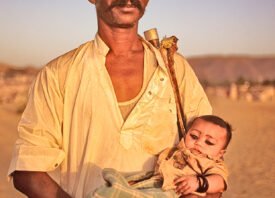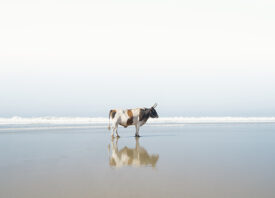Search this site
Pilgrimage: The Faces of Kumbh Mela

“In February of 2025, I embarked on a photographic pilgrimage of my own – to document the faces and spirit of Kumbh Mela, the world’s largest gathering of people. Occurring once every 12 years, over six hundred million pilgrims descend upon the Ganges for ritual bathing, prayer, and devotion. India’s holy men or ‘sadhus’ are drawn to the spiritual significance of this festival. Devoted to their religion, they renounce worldly possessions and attachment.
“The men are revered by Hindus as representatives of the gods. It was these sadhus that drew my attention. Over two weeks, I explored the back streets of Varanasi in India to photograph these sadhus. I wanted to isolate the individuals from the chaos of Kumbh Mela and their frenzied environments, so I often opted to set up a makeshift
studio on location and wait for passersby who caught my attention. I used one strobe, shot through an octabox, and usually positioned my subjects against studio-like backdrops.

“The Naga sadhus, fierce and ancient in appearance, were best photographed at dawn, where they would emerge at the banks of Ganges to smear their naked models with ash and chant mantras. Other sadhus, wrapped in the bright safford-coloured robes, were often found meditating and reciting prayer under the shade of temples.

After bathing in the river, he would gather ash from the remnants of last night’s fire to cover the entirety of his body. He moved with deliberate, meditative slowness. Speaking to him, I learned that ash symbolised both death and transcendence, a reminder that the physical body is impermanent.
“Photographing them was not merely an act of portraiture but an exercise in respect, patience, and cultural understanding. In many cases, a respectful nod or a whispered “Namaste” was enough to open the space between us for a portrait. At other times, simply sitting together without the camera, sharing tea or silence, proved to be the most important prelude to any image.”







Purnia, 600 km away, to celebrate Kumbh Mela.



